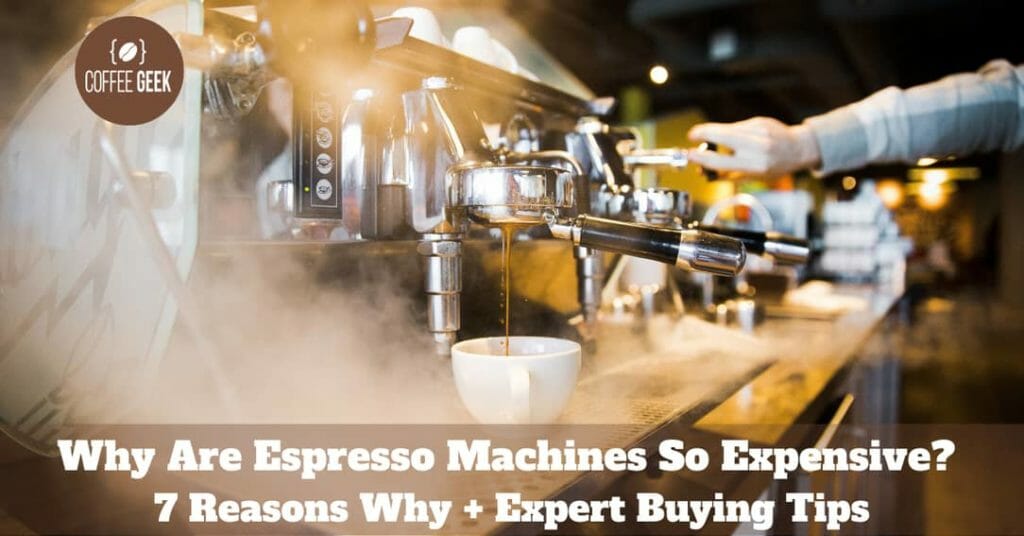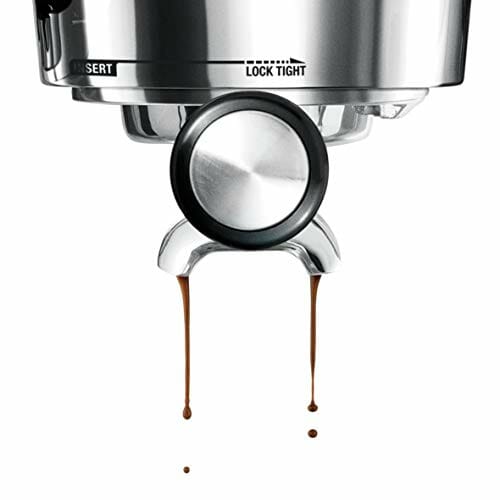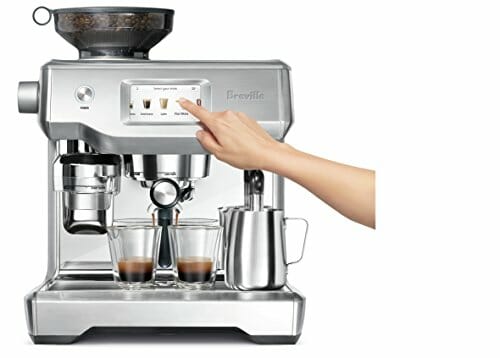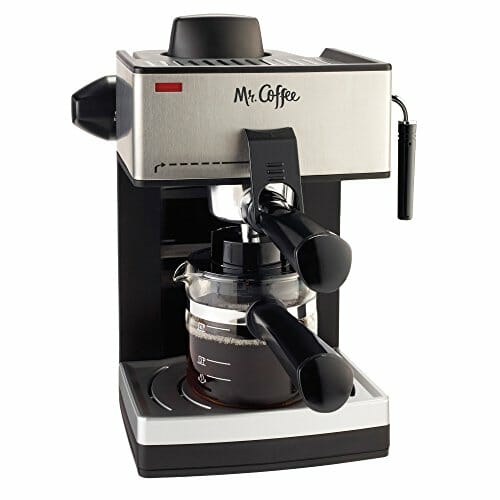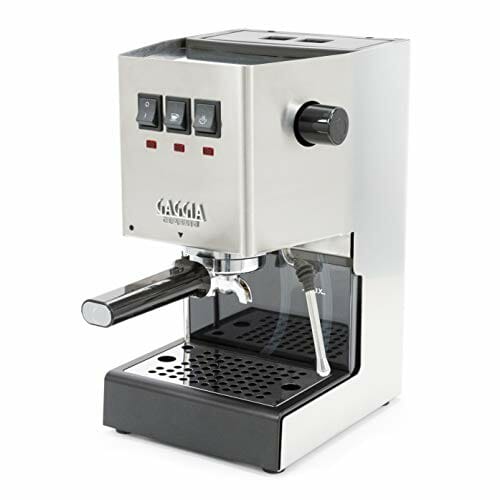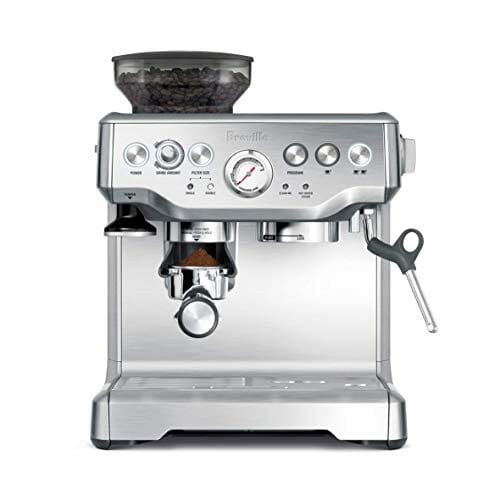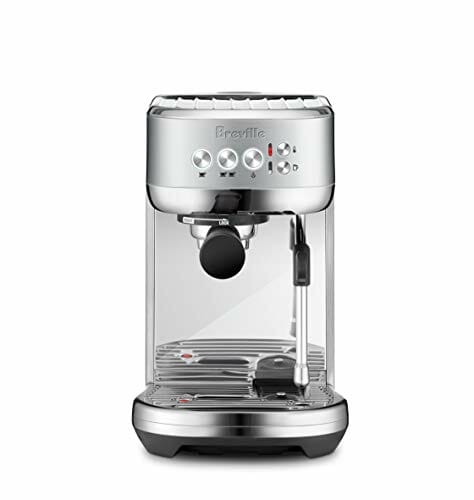Are you a coffee lover who’s been eyeing up a good espresso machine? If so, you’re probably wondering why they’re so darn expensive!
In this blog post, we’ll give you 8 reasons to answer the question “Why are espresso machines so expensive?”, as well as 11 expert buying tips to help you get the best deal.
So, whether you’re in the market for your very first espresso coffee maker or just looking to upgrade, read on for all the info you need.
So, Why Are Espresso Machines So Expensive?
- More Intricate Brewing Mechanism
- Sturdy Construction
- Sophisticated Technologies
- Customizable & Automatic Settings
- Low Consumer Demand
- Brand Premium
- Research & Development
- Built for Commercial use
What Is Special About An Espresso Machine?
First, let’s learn about what makes espresso machines different from other coffee makers:
1. Brewing Mechanism
The most unique thing about them compared to regular coffee machines is that they use high pressure to force hot water through ground coffee beans, resulting in a delicious coffee that’s rich and full-bodied.
This is achieved by a pump that forces water through a small metal filter basket containing tightly packed coffee grounds.
2. Coffee Beans
- Blend:
A traditional blend of both Arabica and Robusta coffee beans can create a good espresso brew with a strong coffee taste, more prominent crema, and higher caffeine content. In contrast, most coffee machines pair the best with 100% Arabica beans.
- Roast:
Most coffee experts recommend using darker roasted beans (Espresso Roast) when making espresso to produce stronger, darker, and richer espresso shots in both taste, body, and aroma.
A drip coffee maker, on the other hand, makes use of medium-roasted coffee.
- Grind:
You have to prepare fresh finely ground coffee beans that have been ground to a fine powder when using espresso makers.
A grind too coarse can lead to under-extraction, while a grind too fine can result in over-extraction, or worse, clogging, which can wreck the device.
3. Brew Amount
The amount of coffee an espresso brewer makes is also a lot less than a drip coffee machine.
The former can usually pull a single or double shot of espresso each time only, which is around 1 – 2 oz (30 – 59 ml), respectively, unlike the latter which can produce a whole carafe (8 – 12 cups) per brew cycle.
4. Brew Time
Since the brew amount is few, the brew time is also very short. It only takes 25 – 30 seconds for most espresso machines to brew coffee, while drip coffee makers take at least 4 minutes to get the job done.
5. No Filter
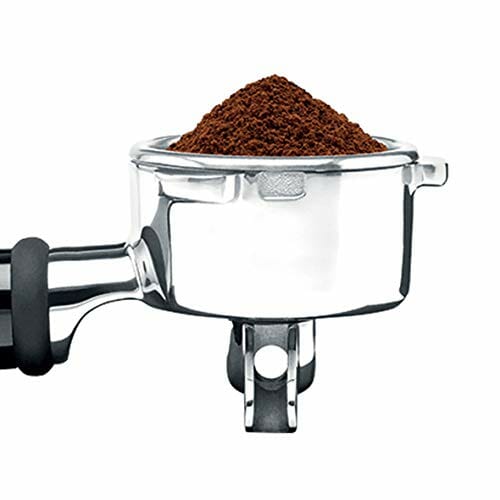
Espresso machines don’t typically use filters, so all of the extracted coffee compounds end up in the final cup. This results in a more robust flavor since all of the bean’s natural oils and flavors are extracted.
6. Pressure Regulation
To produce a consistent result each time, it must be able to regulate the amount of pressure being used to brew the coffee.
The optimal amount of pressure for pulling an espresso shot is 9 bars, but many espresso machines are equipped to be capable of up to 15 bars of pressure.
7. Milk Frothing Capability
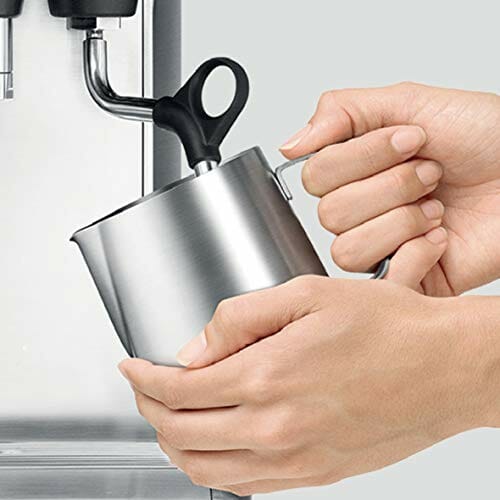
Many espresso machines also have a steam wand that can be used to froth milk to make milky espresso-based drinks like lattes and cappuccinos.
It creates a vortex in the milk while simultaneously heating it to the perfect brewing temperature, resulting in fluffy and creamy foam.
8. Level Of Automation
There are many types in the market, ranging from manual and semi-automatic to fully-automatic espresso machines.
Most of the time, the more automation and programmability the device offers, the more expensive it is (naturally). I will dive into this topic more later on. So stay tuned.
Why Are Espresso Machines So Expensive?
Do those differences make espresso machines so expensive? Let’s find out.
1. More Intricate Brewing Mechanism
As mentioned before, the brewing mechanism of espresso machines is a lot more intricate.
It employs the use of a consistently precise amount of pressure and heat to produce a rich and flavorful cup of coffee, which require more engineering and construction.
Supporting components such as the portafilter, group head, and brew boiler also add to the overall complexity (and price) of the machine.
2. Sturdy Construction
Espresso machines are generally built with higher quality materials than regular coffee makers to withstand the higher pressures involved in the brewing process.
This results in a more durable and long-lasting machine that can take a lot of wear and tear.
For instance, they often come with a stainless steel body instead of plastic, which is not only more durable but also gives the machine a more premium look and feel.
3. Sophisticated Technologies
The technology involved in espresso machines has also gotten a lot more sophisticated over the years.
To promote convenience, more and more espresso machines now come with built-in features like a coffee grinder, hot water outlet, and steam wand to create a streamlined espresso coffee brewing experience.
Navigation has also been upgraded from manual buttons and dials to a digital display with high-tech touchscreen controls in some of the more expensive models. And, obviously, these technologies come at a cost.
4. Customizable & Automatic Settings
With the advent of programmable settings and automatic features, these machines have become a lot easier and quicker to use, which justifies their higher price tags.
The more customizable settings a good home espresso machine has, the pricier it gets.
For example, some models allow you to adjust the grind size, grind amount, brew amount, brewing temperature, and even the pressure.
The user gets to “manually” adjust and monitor significant parameters that affect the brewing process while leaving all of the manual hard work to the coffee maker, a step-up from traditional espresso machines.
5. Low Demand
Drip coffee machines still dominate the home coffee brewing market with over 40% of coffee drinkers in the US utilizing them for past-day consumption, as reported in 2020.
Compared to them, espresso machines are a lot less popular, accounting for only 9% of coffee drinkers in the same survey.
The low demand explains why there’s no need to mass-produce espresso machines and why they tend to be more expensive than drip coffee machines.
6. Brand Premium
As with most products, the brand name also plays a big role in determining the price of an espresso machine.
For example, a mid-range espresso machine of brand-name brands like Breville already costs around $500, while a comparable model from a lesser-known brand can be had for as low as $200.
The more popular and premium the brand, the higher the price tag is. And it’s usually a good trade-off if the well-known brand is in fact well-known for (a) good reason(s).
7. Research & Development
Considering how complicated these coffee makers are, it takes a whole team of experts and manufacturing costs to do research, develop, and build quality espresso machines.
And bigger brands tend to have more money to invest in R&D to make better machines. So the price has to be high enough to compensate for all of the time, money, blood (hopefully not), and sweat that goes into the craft.
Now that we’ve answered the question “Why are espresso machines so expensive?”, let’s take a look at # expert tips on how to get the best deal when buying one.
8. Built for Commercial Use
Usually, espresso machines are used in cafes and restaurants around the world which gives them an extremely high price tag as they are built to work all day, every day without fail.
That same technology has been used in home espresso machines just on a much smaller scale.
What Should You Look For In An Espresso Machine?
1. Type Of Espresso Machine
Here are some common types of espresso coffee machines in the market you should keep in mind during your search:
- Steam-Driven Machines:
These devices heat water to boiling temperatures and utilize steam pressure to force hot water through the ground beans.
This is pretty similar to how a Moka Pot (stovetop espresso maker) works.
Today, electric steam-driven espresso coffee machines can still be found in the market.
- Lever-Driven Machines:
A lever espresso coffee maker is a manual machine that uses human strength (via a lever) to generate the necessary pressure for brewing espresso.
- Pump-Driven Machines:
As its name suggests, these machines utilize an electric pump to generate the necessary pressure to brew espresso.
Pump-driven espresso machines are the most common type found in today’s market, in the form of the following 3:
+ Semi-automatic machines have an automated system to run the water at the ideal pressure through the grounds, while the rest (grinding, tamping, and timing the extraction time) has to be overseen by the user.
+ Automatic espresso machines can automatically stop the water flow, unlike semi-automatic ones.
This allows them to produce a more consistent result each time and take some of the work off your shoulder.
+ Super-automatic machines can pretty much do everything.
Grinding, dosing, tamping, and brewing.
All you have to do is give them instructions via buttons or digital screens.
Coffee lovers who prioritize convenience, speed, and ease of use can benefit from these expensive coffee machines.
2. Ease Of Navigation
The learning curve is pretty steep when it comes to making espresso. That’s why it’s important to pick an espresso machine that’s relatively easy to use and navigate, especially if you’re a beginner.
The control panel should be straightforward, with clearly labeled buttons or knobs or full-on digital displays and touchscreens. The user manual should also be clear and concise, without being too technical.
3. Pressure
As we’ve mentioned before, espresso is extracted under high pressure (around 9 bars). That’s why the espresso machine you choose should be able to generate and maintain consistent pressure throughout the brewing process.
4. Programmability
Cheap espresso machines like manual devices allow you to control everything, while more high-end espresso machines that are fully automatic don’t give you as much freedom.
So, if you’re someone who likes to play around with different settings to find the best espresso recipe, then invest in one with great room for programmability.
5. Grinding Capability

Many quality espresso machines also come with a built-in grinder to save you the extra step (and money) of having to buy a separate one.
Choose a machine with adjustable grind settings so that you can experiment with different grind sizes and find the perfect one for your espresso.
6. Frothing Capability
The same as the built-in grinder, a built-in frother can create a streamlined espresso brewing experience. It’ll also save you from having to buy a separate steamer.
Frothing milk is an essential step in brewing coffee like lattes, cappuccinos, and other milk-based espresso drinks.
7. Ease Of Cleaning
Espresso machines require regular cleaning and maintenance to function properly and last long.
The frequency of cleaning and descaling will depend on how often you use the machine and how hard the water in your area is.
At the very least, you should do daily upkeep, monthly cleaning cycles, and descaling cycles (to remove mineral buildup) every few months.
8. Durability
Even if you take good care of your espresso machine, it’ll still go through a lot of wear and tear from regular use.
That’s why you should pick one made with high-quality materials that can withstand years of use. Stainless steel is always a good option because it doesn’t rust, corrode, or discolor.
High-quality espresso machines that are made with high-quality materials and maintained in their tip-top shape can last from 5 – 10 years or even 15 years!
9. Size
Do you have enough counter space for a large and bulky espresso machine?
If not, then consider getting a compact one that won’t take up too much space.
Of course, the size of the espresso machine will also affect its price and features.
So, it’s important to strike a balance between the two.
10. Design
This is a matter of personal preference, but it’s still worth considering since you’ll be looking at your espresso machine every day.
Do you want a sleek and modern design or something more classic? What color would look good in your kitchen? These are all valid questions to ask yourself before making a decision.
11. Price
Finally, consider your budget. How much are you willing to spend on an espresso machine?
Remember that you’ll also need to factor in the cost of accessories like grinders, steam wands, and descaling solutions.
Espresso machines can range from a few hundred dollars for cheap machines to a few thousand, so it’s important to set a realistic budget before beginning your search. (The most expensive espresso machine is well over $20,000.)
Are Espresso Machines Worth It?
Yes, they’re a great investment for coffee lovers who want to enjoy barista-quality coffee at home. It’s also a good option for those who entertain often and want to impress their guests with homemade espresso drinks. Check out the top-performing espresso machines in the market!
Of course, an espresso machine is a significant investment, so it’s important to do your research and choose one that’s right for you. Find more budget-friendly options here.
If you really don’t have much to spare, check this list of espresso machines that only cost under $200!
FAQs
How Much Should I Spend On An Espresso Maker?
There is no definitive answer to this question since it depends on your budget and what features you’re looking for. However, you can expect to spend anywhere from a few hundred dollars to a few thousand on a high-quality espresso machine.
Does An Expensive Espresso Machine Make A Difference?
Yes, an expensive machine will generally be of higher quality than a cheap espresso machine. This means that it’ll be better at extracting coffee flavors and creating a smooth, consistent espresso.
Does Buying An Espresso Machine Save Money?
Yes, buying an espresso machine will save you money in the long run. Instead of spending money on expensive coffee drinks at cafes, you can make them at home for a fraction of the cost.
How Long Do Espresso Machines Last?
With proper care and maintenance, an espresso machine can last anywhere from 5 – 10 years. However, some high-quality machines can even last 15 years!
Are Espresso Machines High Maintenance?
Yes, like most devices, espresso machines require regular upkeep to keep them running smoothly. This includes daily cleaning, monthly deep cleanings, and descaling cycles every few months.
How Much Does A Professional Espresso Machine Cost?
Commercial machines at a coffee shop can cost at least $3,000 to 10 times that.
What Espresso Machines Do Starbucks Use?
Many Starbucks stores are currently using the Mastrena High-Performance Super-Automatic Espresso Machine.

